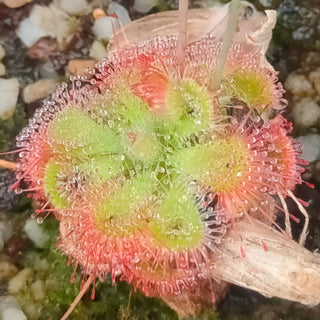Amelanchier alnifolia
SASKATOON SERVICEBERRY
- Unit price
- / per
Amelanchier alnifolia, the saskatoon berry, ia also known as Pacific serviceberry, western serviceberry, western shadbush, or western juneberry. It is a shrub with an edible fruit, and is native to North America. It most often grows to 1-8 metres (3-26 feet) tall.
With a sweet, nutty taste, the fruits have long been eaten by Indigenous peoples in Canada, fresh or dried. They are used in saskatoon berry pie, jam, wines, cider, beers, and sugar-infused berries similar to dried cranberries used for cereals, trail mix, and snack foods.
Location: Sun
Type: Hardy shrub
Hardiness zones: 2-7
Seeds per packet: 3
Soak the seeds for 12-24 hours before planting. Sow just under the surface of the soil and water in. Then cover them with plastic and place in a fridge for 90 days. Be sure they stay moist. After the cold stratification period they are then brought back to room temperature 20-22C (68-72F) for them to germinate. Germination is generally 30-90 days after the warming period, though some can take longer. Do not discard the planting tray, as patience is needed, and they are well worth the wait.
Amelanchier alnifolia
SASKATOON SERVICEBERRY
- Unit price
- / per
Multiple secure payment options available.
Adding product to your cart
You may also like
Amelanchier alnifolia, the saskatoon berry, ia also known as Pacific serviceberry, western serviceberry, western shadbush, or western juneberry. It is a shrub with an edible fruit, and is native to North America. It most often grows to 1-8 metres (3-26 feet) tall.
With a sweet, nutty taste, the fruits have long been eaten by Indigenous peoples in Canada, fresh or dried. They are used in saskatoon berry pie, jam, wines, cider, beers, and sugar-infused berries similar to dried cranberries used for cereals, trail mix, and snack foods.
Location: Sun
Type: Hardy shrub
Hardiness zones: 2-7
Seeds per packet: 3
Soak the seeds for 12-24 hours before planting. Sow just under the surface of the soil and water in. Then cover them with plastic and place in a fridge for 90 days. Be sure they stay moist. After the cold stratification period they are then brought back to room temperature 20-22C (68-72F) for them to germinate. Germination is generally 30-90 days after the warming period, though some can take longer. Do not discard the planting tray, as patience is needed, and they are well worth the wait.
















































